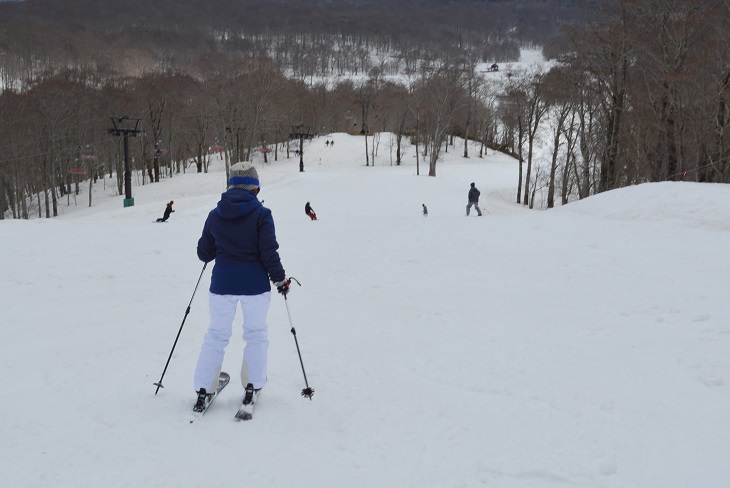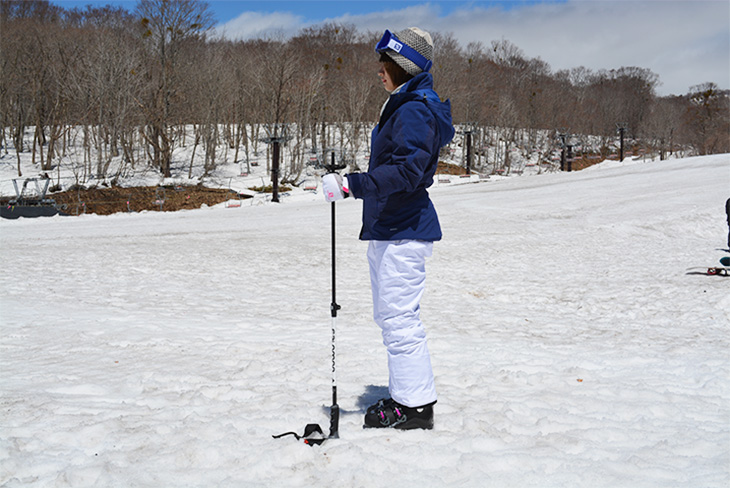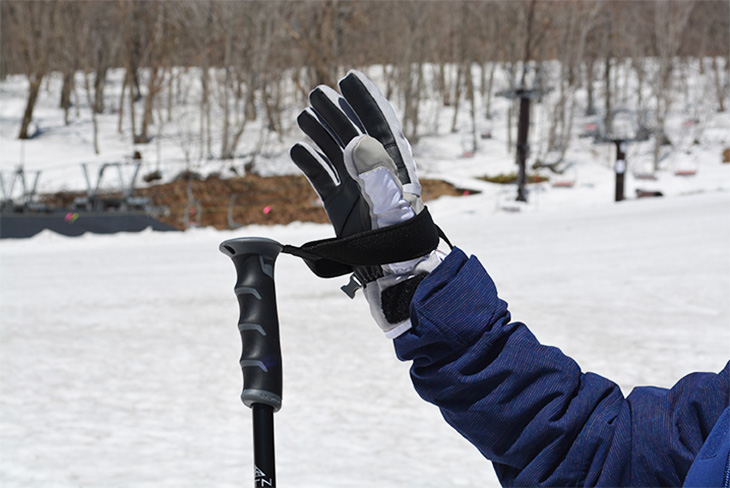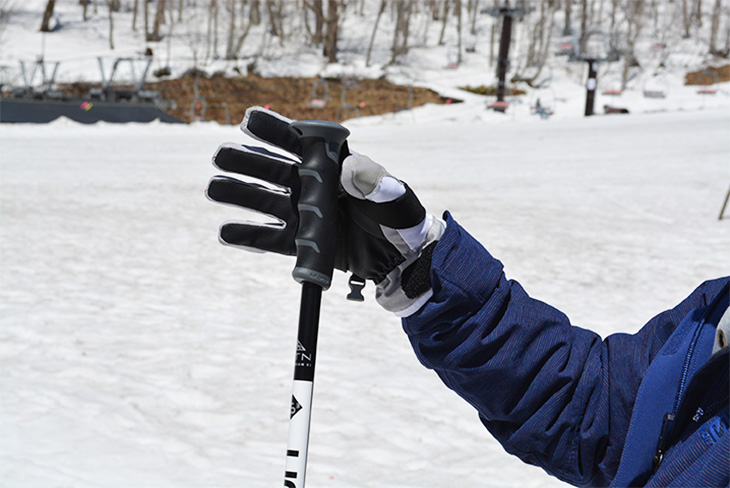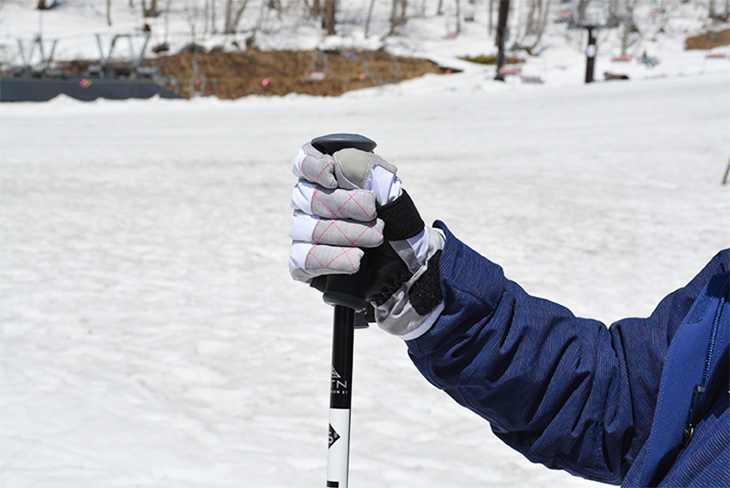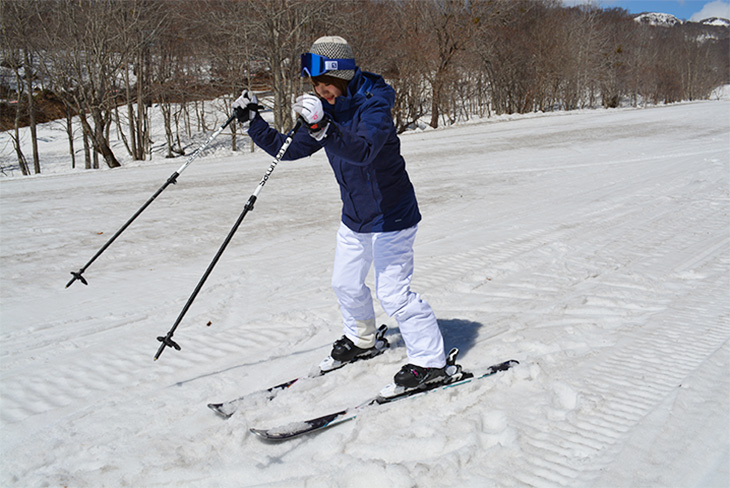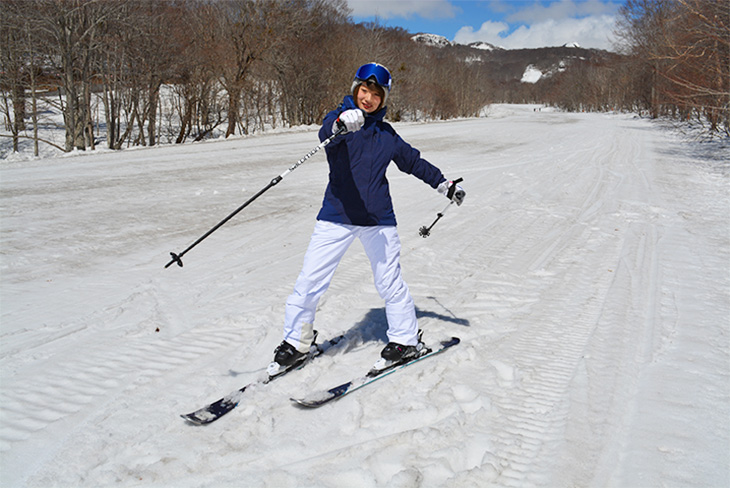Use the poles to time the turns or balance your body when skiing. You can also use them to move forward on a flat surface or go up a slope. Many people grip the poles incorrectly, so it's best to learn the correct grip, and how to choose the right shaft length.
Features of the poles
Poles are used to time turns and balance your body when you are skiing. During skiing, you only stick them lightly into the snow rather than planting them deeply. Poles also come in handy when you're moving forward on a flat surface or up a slope.
How to choose the right length
You choose the poles according to your height. The right length - that is, not too long nor too short - is best. The way to measure this is to hold the poles upside down. If your elbows are at a right angle, that's the right length. There are also adjustable-length poles that can be fitted to your needs.
How to grip the poles
When you use the poles, put the strap around your wrist. There is a correct way to grip the pole. First, put your hand through the strap from underneath.
Grip the pole over the strap. The strap is now inside your palm.
This is the correct grip. This way, the strap will support part of your weight, which is convenient when you use the pole as support.
Wrong grip
If you put your hand through the strap from above, the pole can easily leave your hand when you let go of the pole. What's more, the pole could stay stuck in the snow when you stick it in the snow, causing a wrist injury. To prevent accidents like loss or injury, master the right grip beforehand.
When poles come in handy
Poles are handy for moving forward on a flat surface, or when the slope is too gentle and it's hard to ski forward. Pushing yourself forward with the poles saves energy and helps you to gain speed. Another use for poles is as canes when you step up a hill.
Dangerous use of poles
Using your poles carelessly could cause injury. For instance, some people try to stop their skis moving forward by sticking the poles in the snow. This is very dangerous, as the poles may not stop the skis and the grip can hit your face or chest. Make sure to stop by controlling your skis properly and slowing down.
Do not swing the poles
Some people swing the poles to stay in balance, but this is also a dangerous thing to do. Poles, made of hard materials like aluminum and carbon, can hurt others when they hit them. Take care not to swing your poles around and accidentally hit people with them.
You can do without the poles at the beginning
If you're a beginner or a child and not used to skiing, you may find poles unnecessary. In fact, you can practice up to a certain level without using poles at all. That way, you'll have both hands free, more control of your upper body, and lower the risk of hurting yourself or others with the poles.


